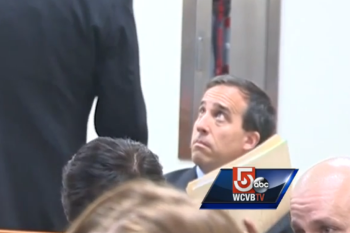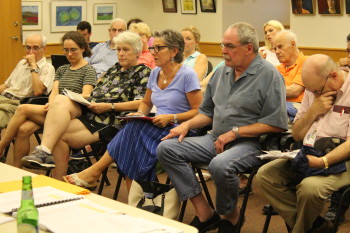Photo: Moozy’s in Belmont.
When it’s July and the temperatures reach 90 degrees, owning a successful ice cream store like Moozy’s at the intersection of Trapelo and Belmont is the easiest business around, said owner Dante Muzzioli. All he has to do is open the doors and the crowds follow.
But in February, when record winter snow levels made finding his front door a challenge, Moozy’s’ business literally freezes in place.
“It’s a ghost town when the weather gets cold. It gets really rough for six months,” said Muzzioli. “It’s a nice spot and it looks beautiful but I’m still trying to recoup the money I lost over the winter.”
In an attempt to expand his revenue base, Muzzioli came before the Belmont Board of Selectmen on Monday, July 27, seeking to expand the hours on his Common Victualler license to allow the popular ice cream shop to compete in the breakfast trade.
The former long-time head coach of the Belmont High School boys ice hockey team – in May, Muzzioli was inducted into the Massachusetts State Hockey Coaches Association’s Hall of Fame – said while he has been keeping Moozy’s – located at 2 Trapelo Rd. – afloat by transferring funds from his other businesses, “it really has to stand on its own” to continue in operation over the long term.
“It’s all about survival and that place can not survive without a change,” said Muzzioli.
Muzzioli, who runs a successful landscaping firm and other businesses, was seeking to open the store beginning at 6 a.m. during the week to compete with nearby eateries and coffee shops such as Starbucks, Aram’s Cafe and Teddy’s Kitchen, each in nearby Cushing Square.
The breakfast trade would include coffees, bagels, pastries and plates for sit-down service, serving residents on their way to work – the store is located on an inbound stop for the bus to Harvard Square – and those seeking a weekend morning meal.
“I think the town needs a nice high-end breakfast place,” he said.
Yet those living in the residential neighborhoods across Trapelo Road worried that new hours would exacerbate parking issues on their streets in addition to an earlier start to commerce in the area.
Oak Avenue’s Rita Butzer Carpenter said there would not be enough parking at the store – there is no lot parking for the store – to accommodate a high-volume coffee shop-type operation, suggesting language be included with any approval that would prevent the store from accepting a Starbucks “kiosk” selling that brand of coffee at the location.
Carpenter’s neighbor Dr. David Alper said a 6 a.m. start would be “egregious” to the neighbors especially on the weekend. He sought a compromise in which the store would open at 7 a.m. on weekdays and 8 a.m. on the weekend.
Selectmen Chair Sami Baghdady, who said that he would hate to see the town possibly loss an independent store and risk seeing a chain coffee shop take its place, voted with his two fellow members to allow the store to open at 6 a.m. during the work week and 7 a.m. on weekend.
Muzzioli said the vote will allow him to see the operation moving into the future on a more stable financial footing.
“This will help because now we have something that isn’t weather impacted. Breakfast is everyday,” said Muzzioli.

